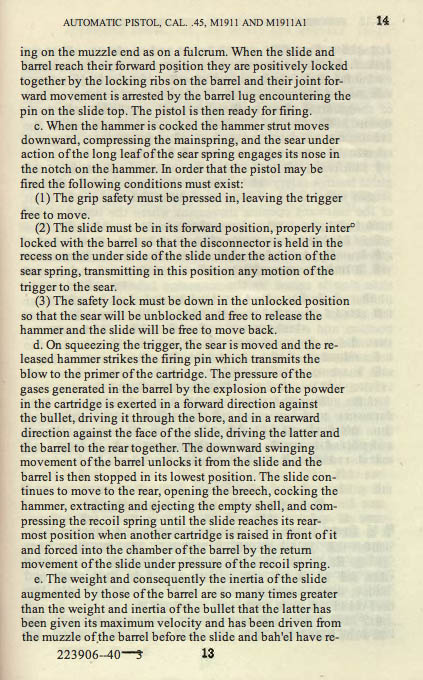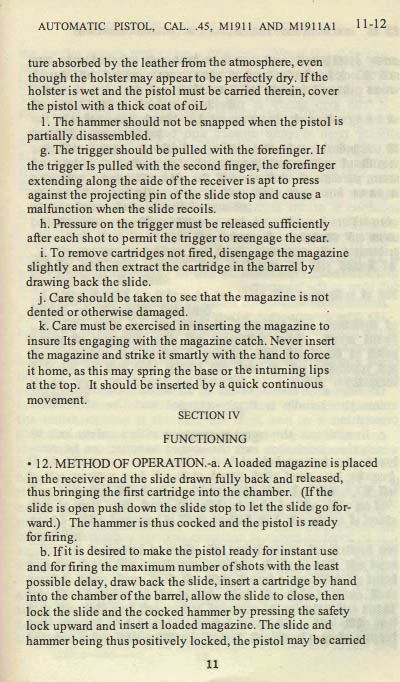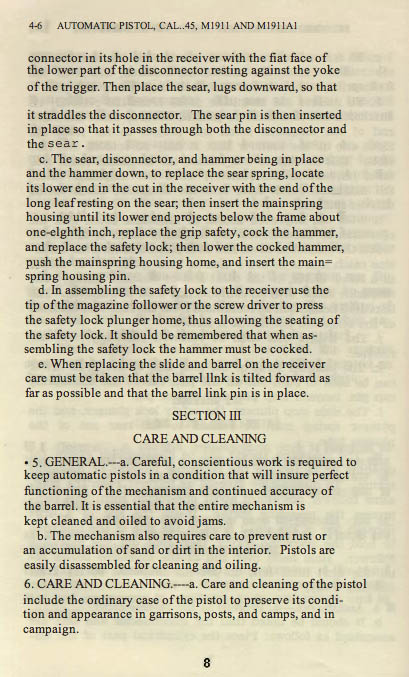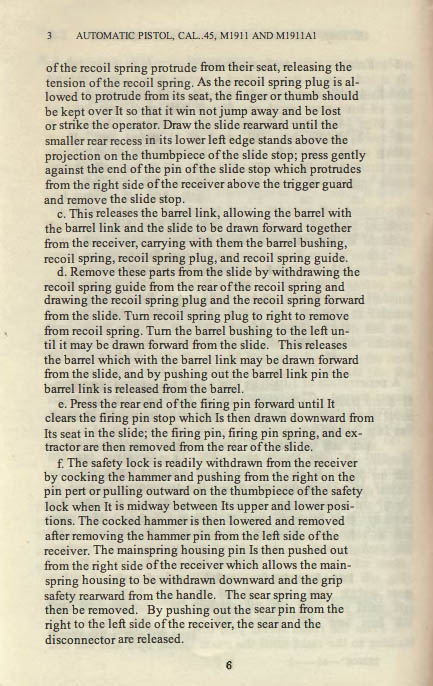AUTOMATIC PISTOL, CAL. .45, M1911 AND M1911A1 ing on the muzzle end as on a fulcrum. When the slide and barrel reach their forward position they are positively locked together by the locking ribs on the barrel and their joint for- ward movement is arrested by the barrel lug encountering the pin on the slide top. The pistol is then ready for firing. c. When the hammer is cocked the hammer strut moves downward, compressing the mainspring, and the sear under action of the long leaf of the sear spring engages its nose in the notch on the hammer. In order that the pistol may be fired the following conditions must exist: (1) The grip safety must be pressed in, leaving the trigger free to move. (2) The slide must be in its forward position, properly inter° locked with the barrel so that the disconnector is held in the recess on the under side of the slide under the action of the sear spring, transmitting in this position any motion of the trigger to the sear. (3) The safety lock must be down in the unlocked position so that the sear will be unblocked and free to release the hammer and the slide will be free to move back. d. On squeezing the trigger, the sear is moved and the re- leased hammer strikes the firing pin which transmits the blow to the primer of the cartridge. The pressure of the gases generated in the barrel by the explosion of the powder in the cartridge is exerted in a forward direction against the bullet, driving it through the bore, and in a rearward direction against the face of the slide, driving the latter and the barrel to the rear together. The downward swinging movement of the barrel unlocks it from the slide and the barrel is then stopped in its lowest position. The slide con- tinues to move to the rear, opening the breech, cocking the hammer, extracting and ejecting the empty shell, and com- pressing the recoil spring until the slide reaches its rear- most position when another cartridge is raised in front of it and forced into the chamber of the barrel by the return movement of the slide under pressure of the recoil spring. e. The weight and consequently the inertia of the slide augmented by those of the barrel are so many times greater than the weight and inertia of the bullet that the latter has been given its maximum velocity and has been driven from the muzzle of the barrel before the slide and bah’el have re-










